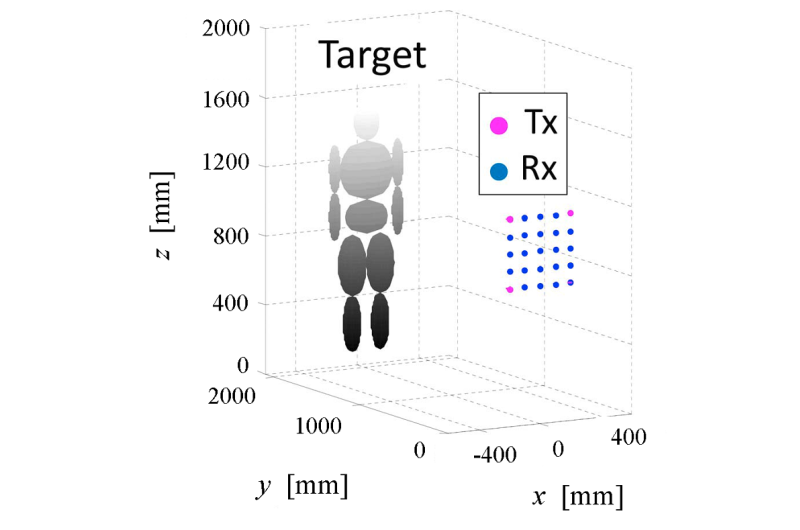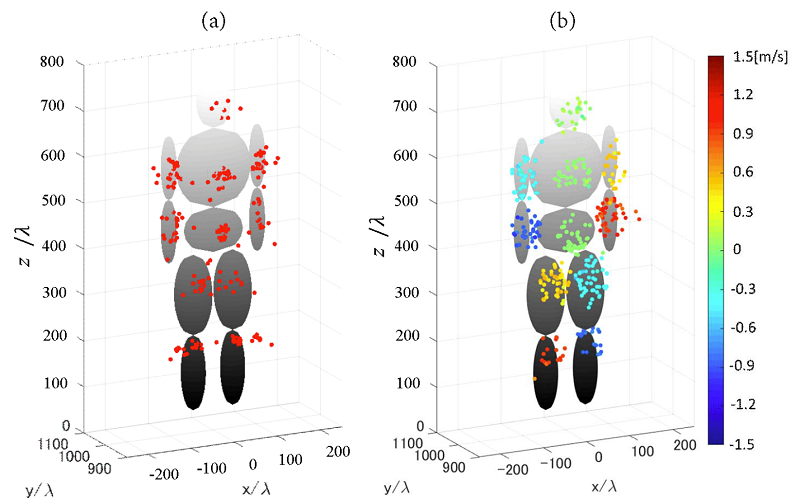New algorithms for high speed and low cost 3-D imaging

Ultrawideband millimeter-wave radar devices are promising as high precision sensors to monitor environments where vision is hindered due to clouds and fog for applications including automobile collision avoidance systems. Importantly, during the identification of objects under such circumstances, raw data from the sensors must be rapidly and accurately processed into three dimensional images by so-called "conversion algorithms."
However, it is difficult to deal with the human body—which causes situations with rich interference—with conventional algorithms in terms of accuracy and computational cost.
Here, Shouhei Kidera at the University of Electro-Communications, Tokyo, and colleagues, have built on their previous research on the range points migration (RPM) method, and incorporates the Doppler velocity component with the RPM image for accurately generating 3-D images with lower computational costs.
The researchers carried out numerical analysis assuming the multiple input multiple output (MIMO) radar with 140 GHz ultra wideband signals. Their method assumed a human body target, which consists of an aggregation of multiple ellipsoidal objects with different velocities.
The key aspect of the approach described by Kidara and his colleagues for improving the accuracy is that during conversion they select only a suitable set of so-called surrounding RPs (SubRPs) from all targeted range points (RPs), using Doppler based discrimination, which contributes a further target recognition issue.
According to the researchers, further improvements in this method can be expected, "by introducing more efficient algorithm to search the optimal intersection points, while the present algorithm relies on full search of possible intersection points."

More information: Yuta Sasaki et al. Three-Dimensional Imaging Method Incorporating Range Points Migration and Doppler Velocity Estimation for UWB Millimeter-Wave Radar, IEEE Geoscience and Remote Sensing Letters (2016). DOI: 10.1109/LGRS.2016.2628909
Provided by University of Electro Communications





















